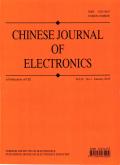基于涡流电磁波的商用WiFi转速监测
IF 3
4区 计算机科学
Q3 ENGINEERING, ELECTRICAL & ELECTRONIC
引用次数: 0
摘要
在工业中,各种机械都涉及到纺纱部件,监测其转速对于预测其运行状态是非常重要的。转速估计的方法有很多,每一种方法都有自己的局限性,例如,传统的接触方法,需要专门的设备;非接触方法,如受光照和遮挡影响的光学方法;以及易受环境噪声影响的声学方法。无线保真度(WiFi)等射频信号可以为旋转传感提供非侵入式方法。然而,传统的WiFi传感很难捕捉自旋物体,当没有径向运动朝向或远离WiFi收发器。提出了一种基于涡旋电磁波的转速估计方法。在商用WiFi上使用q型贴片天线,可以在WiFi通信信道中传输具有螺旋相位前的涡流电磁波。当这些涡旋电磁波与自旋物体表面相互作用时,与原始波相比,回波表现出频率偏移。这种频移与物体的旋转速度成正比,被称为旋转多普勒效应。本文首先推导了WiFi信道状态信息(CSI)与旋转多普勒频移(RDS)之间的数学关系,并设计了一系列信号处理方法,从WiFi信道状态信息中提取RDS,实现了自旋目标的转速估计。实验结果表明,该方法适用于0 ~ 7000转/分的转速范围,相对误差在5%以内。本文章由计算机程序翻译,如有差异,请以英文原文为准。
Vortex EM Wave-Based Rotation Speed Monitoring on Commodity WiFi
In industry, various machinery involves spinning components, and monitoring their rotation speed is important for predicting the operation state. There are many approaches for rotation speed estimation, each with its own limitations, e.g., traditional contact methods, requiring specialized equipment, non-contact methods, such as optical methods affected by illumination and occlusion, and acoustic methods, susceptible to environmental noise. Radio frequency signals like wireless fidelity (WiFi) can provide non-intrusive approach for rotation sensing. However, conventional WiFi sensing struggles to capture self-spinning objects when there is no radial motion towards or away from the WiFi transceivers. This paper proposes a rotation speed estimation method based on vortex electromagnetic (EM) waves. By using a q-shaped patch antenna on commodity WiFi, vortex EM waves with spiral phase front can be transmitted in WiFi communication channel. When these vortex EM waves interact with the surface of a self-spinning object, the echos exhibit a frequency shift compared to the original wave. This frequency shift is proportional to the object's rotation speed, and is known as the rotational Doppler effect. This paper first derives the mathematical relationship between WiFi channel state information (CSI) and rotational Doppler frequency shift (RDS), and we design a series of signal processing methods to extract RDS from WiFi CSI, achieving the rotation speed estimation of self-spinning targets. Experimental results show that this method is applicable to a rotation speed range of 0–7000 rpm, with an relative error within 5%.
求助全文
通过发布文献求助,成功后即可免费获取论文全文。
去求助
来源期刊

Chinese Journal of Electronics
工程技术-工程:电子与电气
CiteScore
3.70
自引率
16.70%
发文量
342
审稿时长
12.0 months
期刊介绍:
CJE focuses on the emerging fields of electronics, publishing innovative and transformative research papers. Most of the papers published in CJE are from universities and research institutes, presenting their innovative research results. Both theoretical and practical contributions are encouraged, and original research papers reporting novel solutions to the hot topics in electronics are strongly recommended.
 求助内容:
求助内容: 应助结果提醒方式:
应助结果提醒方式:


